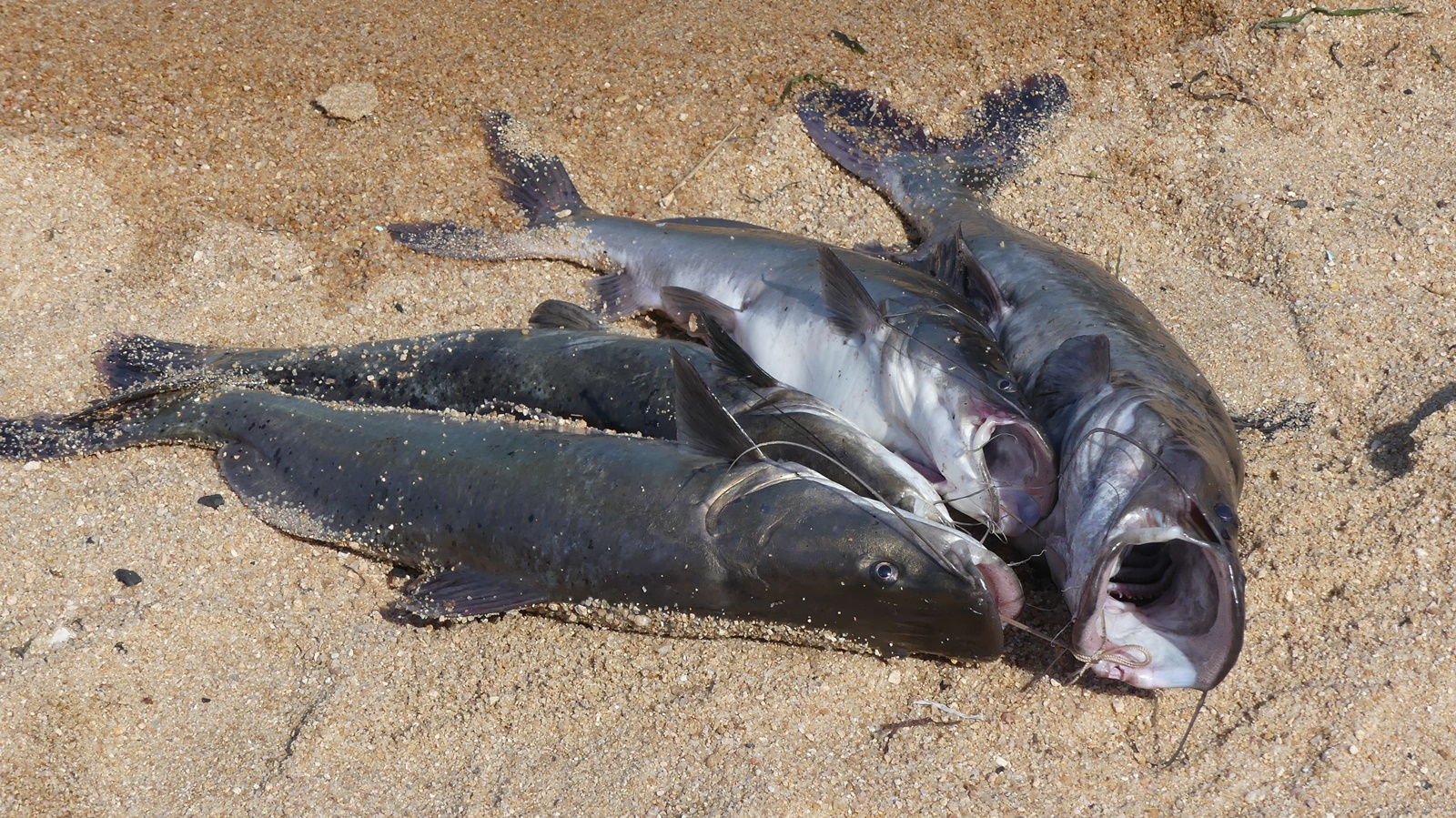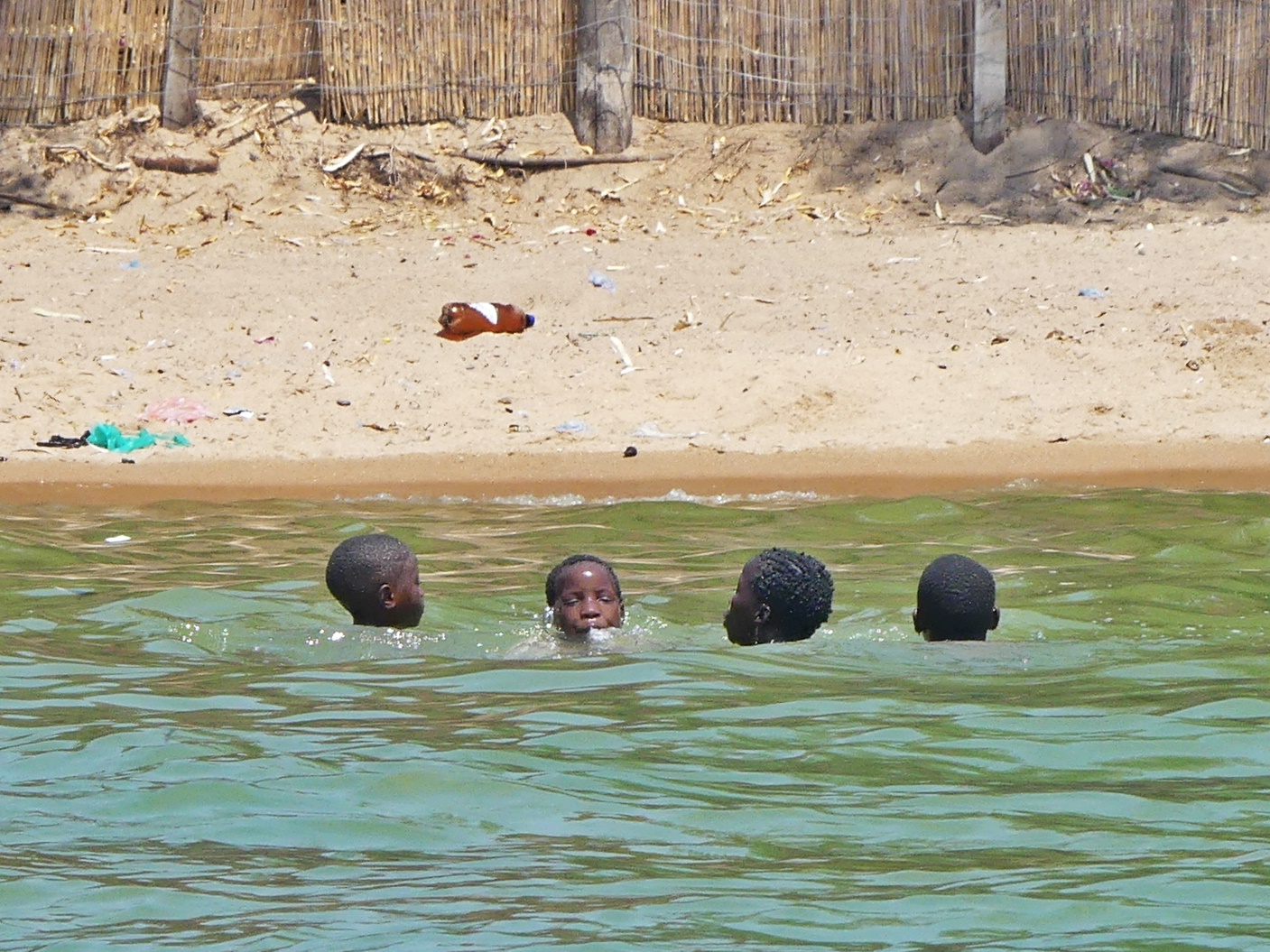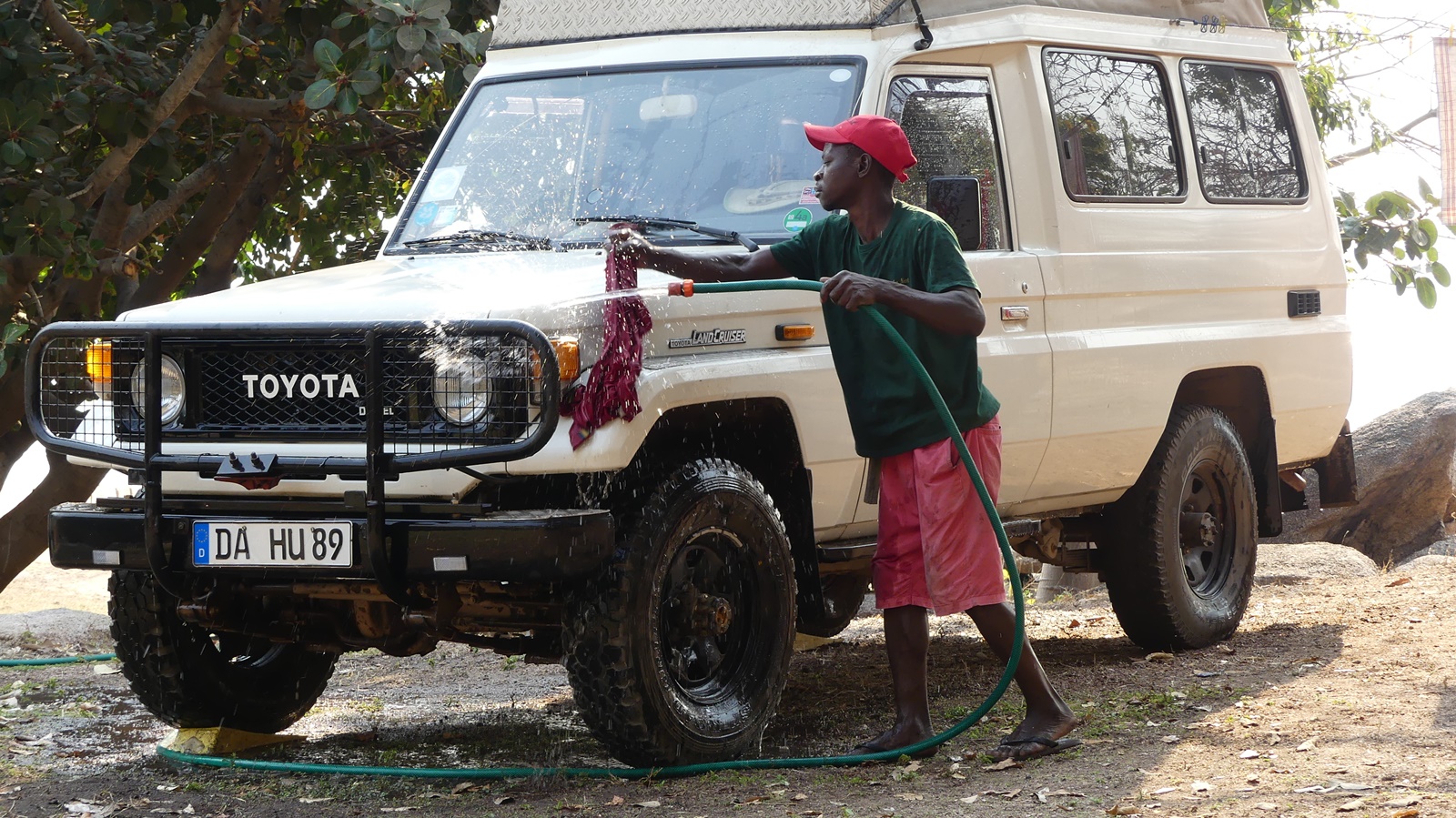Wir sind – nach einer Kaffeepause mit Käsekuchen in der Dedza Pottery Lodge – zurück am Lake Malawi, ganz unten im Süden, in Cape MacLear, einheimischer Name Chembe. Die Halbinsel wurde 1859 von David Livingstone entdeckt, der sie nach seinem Freund und Astronomen Ihrer Majestät, benannte. Es ist der erste Süßwasser-Nationalpark der Welt und eine von zwei UNESCO-Welterbestätten in Malawi.
Der Malawisee ist einer der Großen Seen im Afrikanischen Grabenbruch. Mit einer Länge von 560 Kilometern, einer Breite bis zu 80 Kilometern und einer Tiefe von bis zu 700 Metern ist er der drittgrößte See Afrikas (nach dem Tanganjika- und dem Viktoriasee), etwa 60-mal so groß wie der Bodensee. Der Malawisee ist der fischartenreichste See der Erde, hier leben rund 450 meist endemische Fischarten, die meisten sind Buntbarsche, der Exportschlager für heimische Aquarien. Für die menschliche Ernährung von Bedeutung sind der Chambo und der Kampango, eine Welsart. Geliebt auch von den Schreiseeadlern.
Auch wenn das Wasser des Sees sehr klar ist, lauern hier einige Gefahren: Flusspferde, Krokodile und der unsichtbare Feind: die Schistosoma-Larven, Verursacher der Bilharziose, eine der häufigsten und schlimmsten parasitären Krankheiten in den Tropen, die jährlich 200.000 Opfer fordert. Die Konzentration dieser Larven ist hier im Süden besonders hoch, sodass wir es uns verkneifen müssen, ins Wasser zu gehen (die tägliche Dusche dürfte schon Risiko genug sein). Ganz anders die vielen Kinder aus dem Dorf. Wie allen Kindern auf der Welt, kann man es ihnen nicht verbieten, bei über 30 Grad im Wasser zu toben. Ich frage, ob sie die Bilharziose- Gefahr kennen würden. Natürlich, sagt uns ein Dorfbewohner, aber das sei gar kein Problem, sie bekämen doch alle 6 Monate für jeden eine Tablette Praziquantel. Geschenkt. Ich weiß, woher: Merck.










We are – after an awesome cheesecake in Dedza – back at Lake Malawi, way down south in Cape Maclear, local name Chembe. The peninsula was discovered (for Europeans) in 1859 by David Livingstone, who named it after his friend and Her Majesty’s Astronomer. It is the world’s first freshwater national park and one of two UNESCO World Heritage Sites in Malawi.
Lake Malawi is one of the Great Lakes in the African Rift Valley. With a length of 560 kilometres, a width of up to 80 kilometres and a depth of up to 700 metres, it is the third largest lake in Africa (after Lake Tanganyika and Lake Victoria), about 60 times the size of Lake Constance. Lake Malawi is the lake with the largest number of fish species in the world; it is home to around 450 mostly endemic fish species, most of which are cichlids, the export hit for aquarists worldwide. Of importance for human nutrition are the chambo and the kampango, a catfish species. Loved by the African fish eagles, too.
Even though the water of the lake is very clear, some dangers are lurking here: Hippos, crocodiles and the invisible enemy: the Schistosoma larvae, cause of schistosomiasis, one of the most common and worst parasitic diseases in the tropics, which claims 200,000 victims every year. The concentration of these larvae is particularly high here in the south, so we have to refrain from going into the water (the daily shower should already be risk enough). But not the many children from the village. Like all children in the world, you can’t forbid them to play in the water when it’s over 30 degrees. I ask if they know about the danger of schistosomiasis. Of course, a villager tells us, but that’s no problem at all, because each of them gets a tablet of praziquantel every six months. It’s a gift. I know where it comes from: Merck
Schreibe einen Kommentar